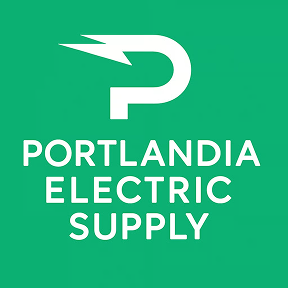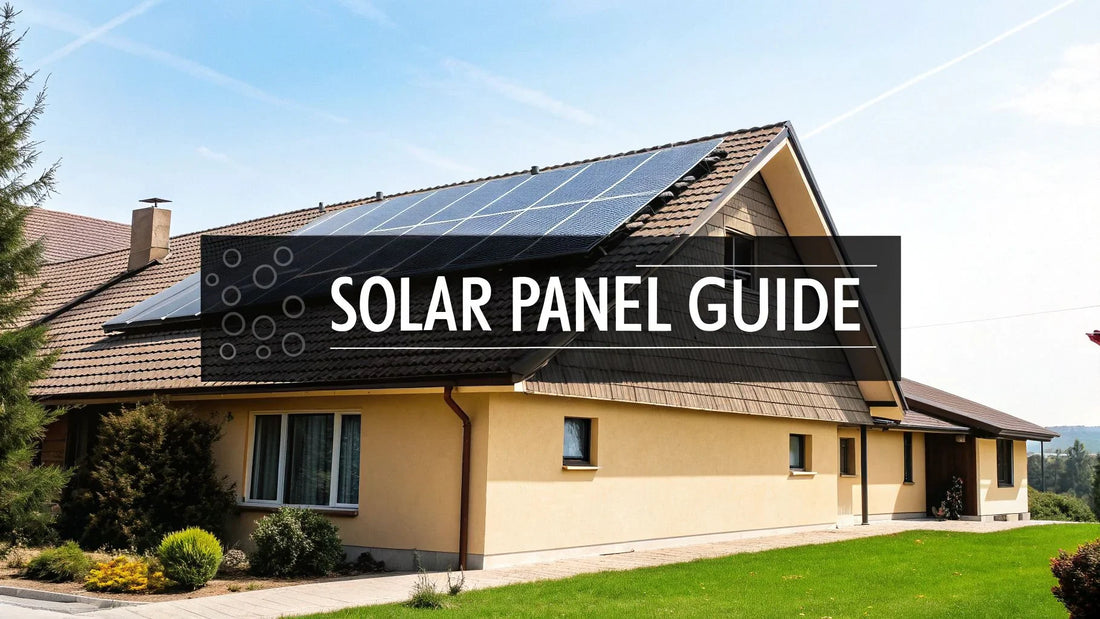
How to Choose Solar Panels: A Buyer's Guide for Installers, Developers & Homeowners
Share
Choosing the right solar panels for any project—from a residential rooftop to a utility-scale farm—boils down to a disciplined evaluation of four critical factors: technology type, real-world performance metrics, total installed cost, and the manufacturer's warranty and bankability.
For installers and EPCs, a failure to properly vet these factors introduces project risk, erodes margins, and can lead to costly truck rolls. For developers and procurement managers, it's the difference between a bankable, high-yield asset and an underperforming one. For homeowners, it's about maximizing long-term energy savings and ensuring peace of mind.
This guide provides a no-fluff, operational framework for making a sound procurement decision based on real-world project realities and current U.S. market conditions.
A Practical Framework for Choosing the Right Solar Panels
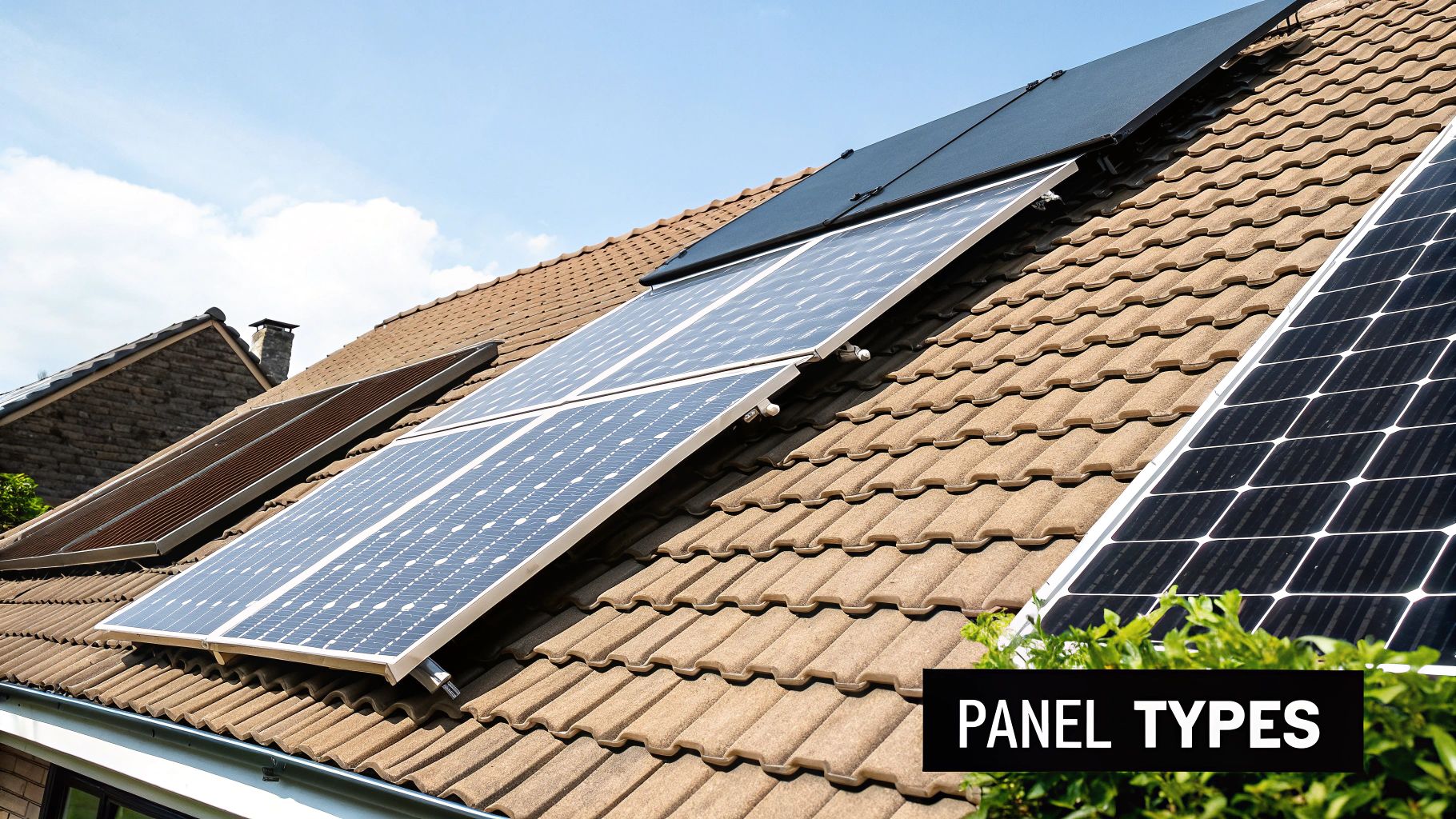
Navigating the solar panel market can be complex, with endless spec sheets and brands competing for attention. This guide cuts through the noise, providing a logical process for professionals and first-time buyers alike. We will focus on the practical, data-driven knowledge needed to select the right equipment for any application.
The current market presents a significant opportunity. With global solar capacity projected to exceed 2.2 terawatts (TW) by the end of 2024, the industry is experiencing a massive oversupply. While this puts pressure on manufacturers, it creates a powerful buyer's market, enabling better pricing and wider availability for your projects.
Core Decision Factors for Every Buyer
A successful solar panel procurement strategy balances four critical pillars. Understanding how they interrelate is the key to optimizing project performance and financial returns.
-
Panel Technology and Type: The initial decision between monocrystalline, polycrystalline, or thin-film panels dictates efficiency, cost-per-watt, and aesthetics. The optimal choice for a commercial rooftop with vast, open space is fundamentally different from that for a suburban home with architectural constraints.
-
Performance Metrics: Wattage is just one data point. A panel's true performance is revealed in its datasheet through metrics like efficiency ratings, temperature coefficient, and degradation rates. These specifications predict how a panel will perform in high-heat conditions and over its 25+ year operational life, separating Tier 1 products from lower-grade alternatives.
-
True Project Cost and Incentives: The sticker price is only the beginning. A complete financial analysis must include all balance-of-system components, labor, permitting, and—most critically—the federal and state incentives (like the ITC and MACRS depreciation) that can dramatically reduce your net investment.
-
Warranty and Bankability: A warranty is your long-term performance guarantee. Scrutinize both product and performance warranties. Equally important is selecting a financially stable, or "bankable," manufacturer. A 25-year warranty from a company that ceases operations in year 10 is worthless.
For further reading on selection criteria, this guide on How to Choose Solar Panels for Your Home offers a solid framework. You can also find more of our technical insights on our solar panels blog.
At-a-Glance Solar Panel Decision Matrix
This matrix simplifies the comparison process, highlighting key metrics and which buyer segments should prioritize them.
| Decision Factor | Key Metric to Check | Why It Matters | High Priority For |
|---|---|---|---|
| Technology Type | Cell Type (Mono, Poly, etc.) | Determines efficiency, aesthetics, and footprint. | Homeowners (aesthetics), Installers (roof space) |
| Panel Efficiency | Percentage (%) | More power from a smaller area; critical for limited space. | Commercial, Homeowners with small roofs |
| Temperature Coefficient | % / °C | Lower is better; shows how well it performs in high heat. | Projects in hot climates (Southwest US) |
| Degradation Rate | % / Year | Predicts long-term energy production over 25+ years. | All buyers, especially for PPA/Lease models |
| Cost Per Watt | $ / W | The standard metric for comparing panel cost-effectiveness. | Commercial Developers, Utility-Scale Projects |
| Product Warranty | Years (e.g., 12-25) | Covers defects in materials and workmanship. | All buyers, especially Residential |
| Performance Warranty | % output over time | Guarantees a minimum power output after 25 years. | All buyers, ensures long-term ROI |
| Manufacturer Bankability | Tier 1 Rating | Financial stability ensures the company can honor warranties. | Commercial Developers, Financial Institutions |
Use this matrix as a primary tool to focus your procurement efforts on the factors that drive success for your specific project type.
Decoding Solar Panel Types And Technology
The core technology inside a solar panel is the first major decision point, impacting everything from system performance and cost to visual aesthetics. This is not merely a technical detail; it is the foundation of your energy asset.
For a homeowner, the choice often prioritizes aesthetics and maximizing energy generation from limited roof space, making sleek, high-efficiency monocrystalline panels a common choice. For a commercial EPC or developer, the calculus shifts entirely to cost-per-watt and long-term energy yield across a large array, where cost-effective polycrystalline panels may offer a superior financial return.
The image below provides a baseline for system sizing based on energy usage and local solar irradiance (sun hours), which are foundational inputs for selecting the right panel technology.
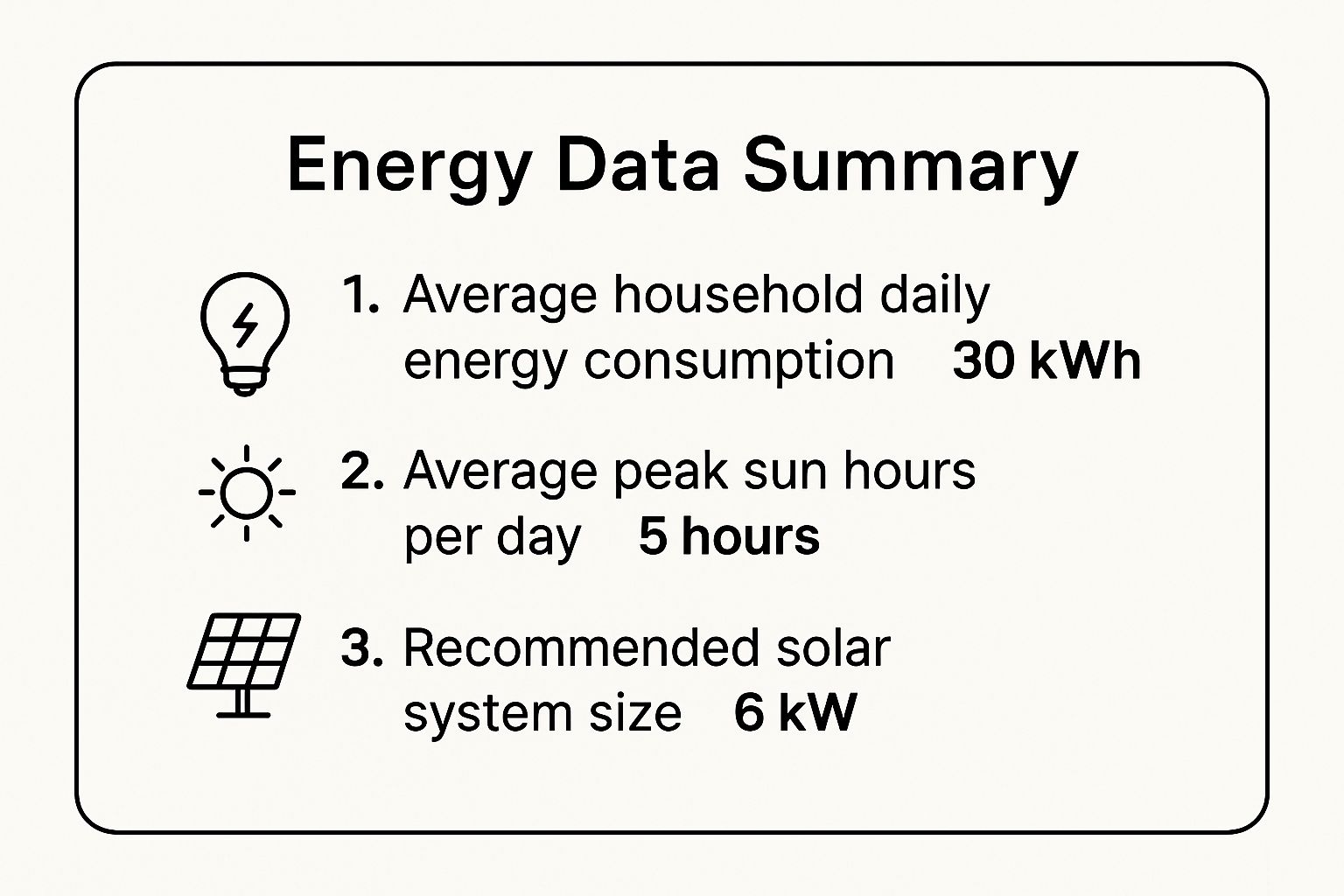
These figures establish your project's power requirements, guiding you toward a panel technology that can meet your targets within your spatial and budgetary constraints.
Monocrystalline vs. Polycrystalline vs. Thin-Film Panels
Selecting the right solar panel technology requires balancing efficiency, cost, and space. This table provides a clear comparison of the three primary market options.
| Panel Type | Average Efficiency | Typical Cost | Best Application | Key Differentiator |
|---|---|---|---|---|
| Monocrystalline | 19% - 22%+ | Higher | Residential roofs, limited space | Highest efficiency and premium look |
| Polycrystalline | 16% - 19% | Moderate | Commercial roofs, ground mounts | Best cost-per-watt for large areas |
| Thin-Film | < 15% | Lower | RVs, boats, flexible surfaces | Lightweight and highly flexible |
The right choice depends entirely on matching the technology to the project's specific operational and financial requirements.
Monocrystalline: The High-Efficiency Standard
Recognizable by their uniform black color, monocrystalline panels are manufactured from a single, pure silicon crystal. This process yields the highest efficiency ratings on the market, typically ranging from 19% to over 22%.
This superior efficiency allows for greater power generation within a smaller footprint, making them the default choice for space-constrained projects like residential rooftops and smaller commercial installations. While the upfront cost is higher, their enhanced performance, longer lifespan, and better heat tolerance often result in a superior long-term ROI. A system's reliability also depends on quality components like properly specified solar panel connectors, which ensure integrity for decades.
Polycrystalline: The Cost-Effective Workhorse
Identified by their blue, marbled appearance, polycrystalline panels are produced by melting multiple silicon fragments together. This less complex manufacturing process results in a more affordable panel.
Efficiency ratings are slightly lower, typically between 16% and 19%, meaning more surface area is required to generate the same power as a monocrystalline array. For large-scale projects such as utility solar farms or commercial buildings with ample roof space, the lower cost-per-watt of polycrystalline panels often makes them the most financially sound choice.
Thin-Film: Specialized and Flexible
Thin-film technology operates differently, using thin layers of photovoltaic material deposited onto a substrate instead of silicon wafers. This results in panels that are exceptionally lightweight, flexible, and inexpensive to produce.
The primary trade-off is efficiency, which is typically below 15%. This low power density makes them unsuitable for most residential and commercial applications where maximizing output per square foot is critical. Their value lies in niche applications like recreational vehicles, marine equipment, and unique architectural integrations where flexibility and low weight are paramount.
Pro Tip for Installers: For a space-constrained residential roof, a high-efficiency monocrystalline panel from one of the best solar panel brands is the professional standard. However, when bidding a large commercial project where cost-per-watt is the primary driver, a high-quality polycrystalline panel can provide the competitive edge needed to win the contract.
Getting Into the Weeds: Performance Metrics and Specs
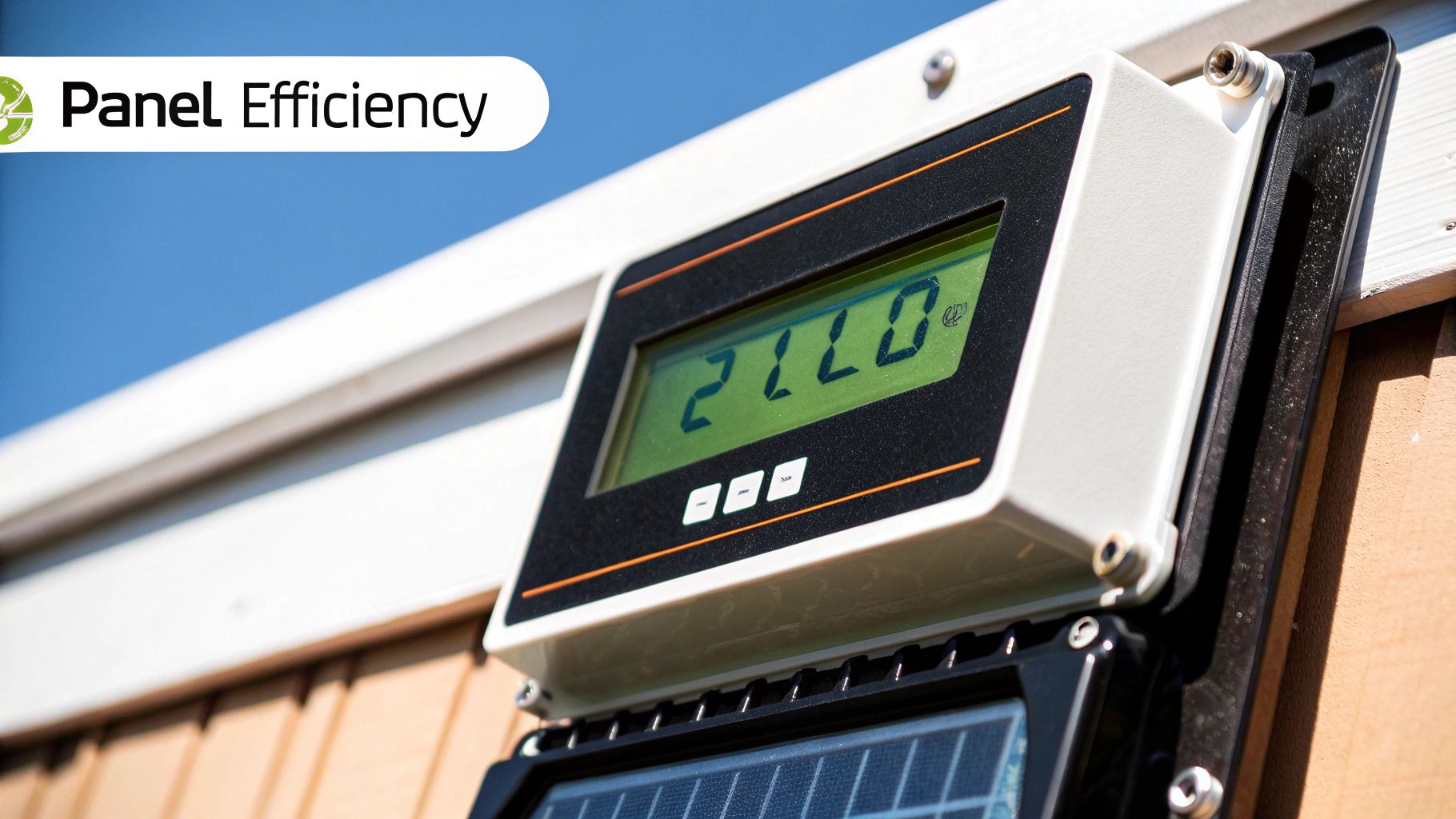
Once a panel technology is chosen, the next step is a rigorous analysis of the manufacturer's spec sheet. This is where you move beyond marketing claims to the hard data that dictates real-world performance and project ROI. The technical data sheet provides a complete picture of how a panel will perform over its 25-year operational life.
For Procurement & Development: These metrics are the only objective basis for an apples-to-apples comparison between supplier bids. For installers, they are critical inputs for system designs that must perform reliably, especially in harsh climates. A thorough understanding of these specifications is non-negotiable for a sound investment.
Core Metrics That Actually Drive Performance
Focus on the four metrics that have the most significant impact on long-term energy yield and financial returns.
-
Efficiency Rating (%): The percentage of sunlight converted into usable electricity. Higher efficiency equals more power from a smaller footprint, which is critical for projects with spatial constraints.
-
Power Tolerance: Displayed as "+/- %" or "+X/-0%". This indicates the potential variance from the panel's rated wattage. A positive-only tolerance (e.g., +5W/-0W) is a hallmark of quality manufacturing, guaranteeing you receive at least the wattage you paid for.
-
Temperature Coefficient: A critical metric for performance in hot climates. It measures the percentage of power output lost for every degree Celsius above 25°C (77°F). A lower coefficient is always better, indicating superior performance under high-temperature conditions common in the Sun Belt.
-
Degradation Rate: All panels experience a slight annual reduction in performance. The degradation rate quantifies this power loss. Premium panels from brands like SunPower guarantee a lower degradation rate, ensuring more consistent energy production well into the system's lifespan.
The Bigger Market Picture
The global solar PV market is expanding rapidly, with a valuation of $296.61 billion in 2025 projected to grow to $622.19 billion by 2034. This growth is fueled by relentless R&D from Tier 1 manufacturers like SunPower, Jinko Solar, and Trina Solar. You can see more solar PV market growth insights on custommarketinsights.com.
Selecting panels from these established, bankable companies ensures you are investing in proven technology from manufacturers with the financial stability to honor their 25-year warranties. These specifications are direct predictors of your project's financial success. A panel with slightly higher efficiency and a lower temperature coefficient may have a higher upfront cost but will generate more kilowatt-hours over its lifetime, leading to a faster payback and a higher overall return on investment.
Understanding Warranties, Certifications, and Bankability
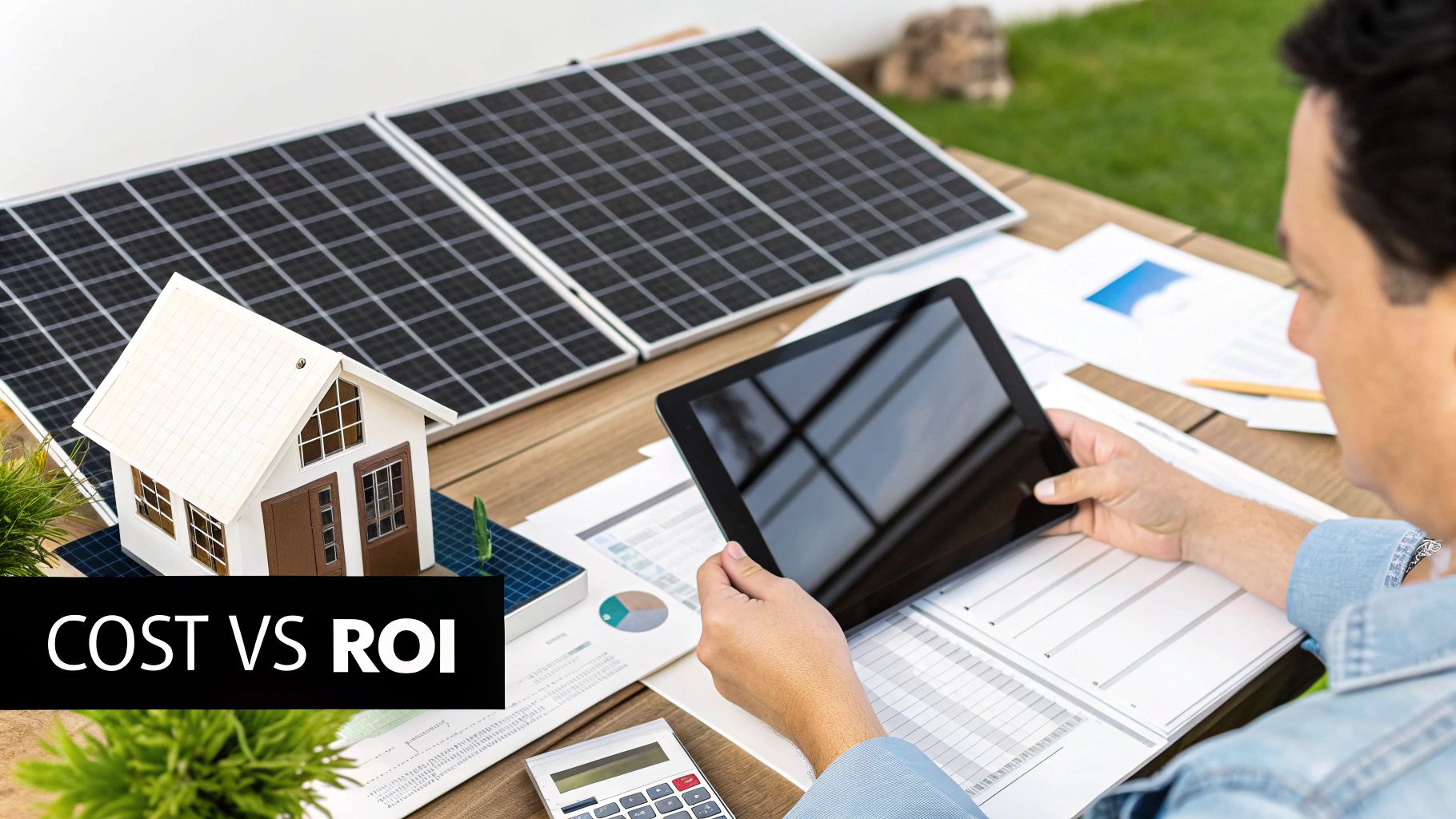
A solar panel is a 25-year power-generating asset. Its long-term value is secured by its warranties, safety certifications, and the manufacturer's financial stability. Overlooking these factors is a common but critical mistake that can transform a sound investment into a future liability.
Critical Mistake: Assuming all warranties are equal. A 25-year warranty is only as valuable as the company backing it. A low-cost panel from a non-bankable manufacturer presents a significant risk that warranty claims will not be honored in the future, leaving the asset owner exposed.
Product vs. Performance Warranties
Solar panel warranties are divided into two distinct components that must be evaluated separately.
-
Product Warranty: This covers defects in materials and workmanship, such as frame failure, junction box issues, or delamination. Standard product warranties range from 12 to 25 years. A longer term indicates higher manufacturer confidence in their production quality.
-
Performance Warranty: This guarantees the panel's energy output over time, protecting against excessive degradation. A typical linear performance warranty ensures the panel will produce at least 85-90% of its original rated power after 25 years.
The Must-Have Certifications for Safety and Compliance
Certifications are non-negotiable requirements for permitting, grid interconnection, and eligibility for financial incentives. For projects in the United States, two certifications are paramount.
UL (Underwriters Laboratories): The UL listing, specifically UL 61730, is the U.S. gold standard for product safety. It certifies that the panel has undergone rigorous testing for electrical safety, fire resistance, and mechanical load tolerance.
IEC (International Electrotechnical Commission): While UL is the primary U.S. standard, IEC certifications like IEC 61215 (design qualification) and IEC 61730 (safety) serve as the global benchmark. Panels holding both UL and IEC certifications meet the highest domestic and international quality and safety standards.
Calculating True Costs and Finding Incentives
The listed price of a solar panel is only one component of the total project cost. A comprehensive financial assessment must account for the all-in installed cost—including all hardware, labor, and soft costs—to accurately calculate ROI and payback period.
For homeowners, this means creating a realistic budget. For commercial buyers and EPCs, it forms the basis of pro forma financial models and is essential for securing project financing. Market dynamics, including supply chain disruptions and U.S. tariffs, can cause price volatility that must be factored into any procurement strategy.
Breaking Down Total Project Costs
A common error is focusing solely on the panel's cost-per-watt. In reality, panels often represent less than half of the total project expenditure. A transparent cost breakdown is essential.
- Hardware Costs: Solar panels, inverters, racking, and all balance-of-system (BOS) components such as wiring, conduit, and disconnects.
- Labor Costs: System design, engineering, project management, and physical installation.
- Soft Costs: Non-hardware expenses including permitting fees, inspection costs, utility interconnection fees, and sales tax.
Navigating Incentives and Tax Credits
A robust ecosystem of financial incentives exists to significantly reduce the net cost of a solar installation.
The most powerful is the federal Investment Tax Credit (ITC), a dollar-for-dollar credit that reduces your federal tax liability by a significant percentage of the total system cost. For a complete overview, see our guide to solar energy solutions.
Additional incentives to leverage include:
- State Tax Credits and Rebates: Many states offer tax credits or direct cash rebates that can be stacked with the federal ITC.
- Local and Utility Incentives: Municipalities and utilities may provide grants or performance-based incentives (PBIs) that pay for generated power.
- MACRS Depreciation: For commercial entities, the Modified Accelerated Cost Recovery System (MACRS) allows for accelerated depreciation of the solar asset, providing a substantial tax benefit.
Exploring available renewable energy grants can also provide critical funding to improve project economics.
The Impact of Market and Policy Fluctuations
The U.S. solar market is dynamic, with pricing influenced by policy and economic trends. In Q1 2025, the industry installed 10.8 GWdc of new capacity. However, policy uncertainty and tariffs create price volatility. In that same quarter, residential solar prices increased by 3%, commercial by 2%, and utility-scale by 1% year-over-year. This underscores the importance of balancing cost with quality and maximizing all available incentives to mitigate market fluctuations.
Common Questions on Choosing Solar Panels
https://www.youtube.com/embed/jSa1tvrrFZg
Even with a thorough understanding of the data, several key questions consistently arise during the final procurement phase. Here are direct, operational answers to the most common inquiries from solar buyers.
What Is a Tier 1 Solar Panel and Does It Matter
Yes, it is critically important. The term "Tier 1" is not a measure of panel quality but a ranking of manufacturer financial stability, compiled by research firms like BloombergNEF. It identifies the industry's most bankable and established companies.
Purchasing from a Tier 1 manufacturer like Jinko Solar or Trina Solar ensures you are sourcing from a vertically integrated company with a strong balance sheet. This is your primary assurance that the manufacturer will be operational to honor its 25-year warranty.
For Developers & EPCs: Specifying Tier 1 panels is a standard requirement for project financing. Lenders and investors will not finance projects built with non-bankable equipment, making this a critical, non-negotiable criterion.
How Many Solar Panels Do I Need for My Project
The only correct answer is: it depends on a detailed analysis. Any quote provided without one is a guess.
The process must begin with your last 12 months of utility bills to determine your annual electricity consumption in kilowatt-hours (kWh). Following this, a professional site assessment is required to evaluate available roof or ground space, roof orientation, and potential shading from obstructions. The assessment must also factor in your local solar "insolation" data (the amount of sunlight received).
While online calculators can provide a rough estimate, they cannot account for these site-specific variables. Only a professional system design can accurately size a system to meet your specific energy needs.
Is It Better to Choose the Most Efficient Solar Panel
Not always. The "best" panel is the one that optimizes the balance between performance, cost, and long-term reliability for a specific project.
High-efficiency panels are ideal for applications with limited space, as they maximize power generation per square foot. However, they command a premium price.
For projects with ample, unobstructed space, a superior ROI can often be achieved by using slightly less efficient but more cost-effective panels from a reputable Tier 1 manufacturer. This strategy often allows for a larger overall system size for the same budget, resulting in greater total energy production and higher long-term savings. The decision is a trade-off between upfront capital expenditure and lifetime energy yield.
Ready to move from theory to action? The experts at Portlandia Electric Supply provide detailed system designs and quotes tailored to your project's specific energy needs and site conditions. Request a Bulk Quote today and let our NABCEP-certified team deliver a comprehensive, no-obligation proposal for your project.
